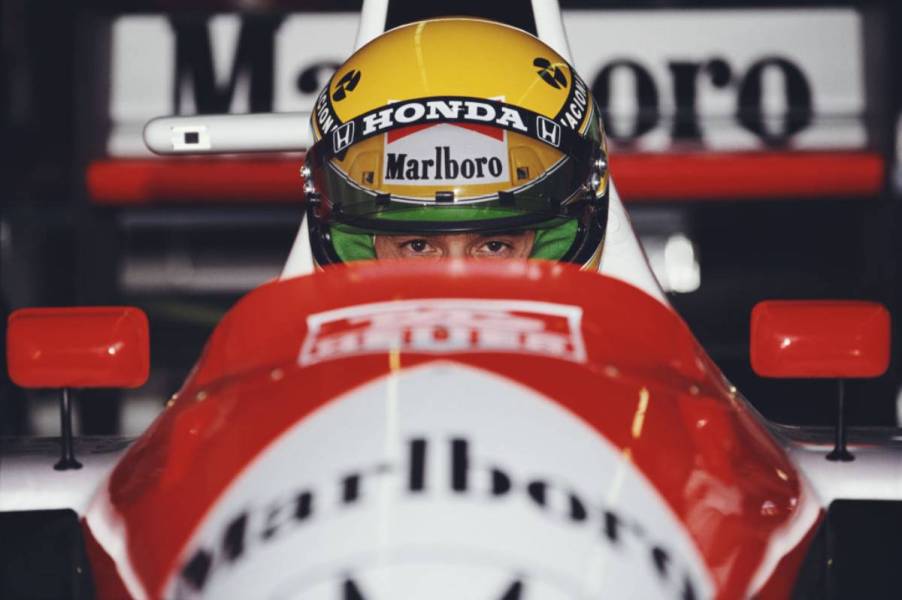
Ayrton Senna’s Tragic Death Ushered in New Safety Protocols for F1
Ayrton Senna is, to this day, one of the most beloved names in F1 history. His death was a terrible day in sports history, as racing fans lost perhaps the greatest driver of a generation well before his time. And for Brazilian F1 fans, they lost a national hero.
The three-time FIA Formula 1 Championship winner was just 34 at the time of his passing. He likely could have raced for several more years, especially knowing that at the time of his death in 1994, he had won his third and final championship just three years before.
But his loss wasn’t totally in vain. Thanks to the significant overhaul of F1 safety protocols in the wake of Senna’s passing, many drivers’ lives have been saved.
The tragic collision that ended Ayrton Senna’s life
The Brazilian F1 driver was indisputably the greatest F1 driver of the ’80s. He more than proved that he was never simply carried to victory by technology, as he had success with four different teams and their associated cars. He drove for Toleman, Lotus, Williams and McLaren, the latter of which produces a supercar bearing his name. Whether handling a Hart, Renault, Honda, or Ford engine, Senna continually placed highly.
His overall success, particularly his rare ability to win the F1 championship series repeatedly, made the Brazilian master something of a living legend. According to RacingNews365, all of that context is necessary to truly understand how the sporting world collectively felt on that horrible day at the San Marino Grand Prix in 1994.
The weekend began terribly, with Austrian driver Roland Ratzenberger getting into a fatal wreck during qualifying. During the actual race, there was another collision, this time with minor injuries—including several spectators. Once the race restarted, in lap six, Senna was in the lead. Senna’s car suddenly left the track, slamming straight into an unprotected, solid concrete barrier.
He attempted to brake, and downshifted twice, to no avail. The impact slammed Ayrton Senna’s head backwards, leading to skull fractures. A suspension spring attached to the steering wheel flew off and penetrated his skull. And the front-right wheel flew off his car, landing on his head. Three sources of head trauma at once was too much for the Brazilian hero to take, and he died shortly after being removed from the cockpit.
Aryton Senna’s untimely death led to major safety revisions in Formula One
Deaths had been common in the early years of F1, but had become rare by 1994. It was over a decade since the last fatal incident. But the death of Ratzenberger left the drivers shaken up, reminding them of the dangers of the sport. Senna himself held a meeting before the Sunday race, hoping to re-establish the Grand Prix Drivers’ Association and explore safety improvements.
Sadly, he did not live to see that followed through on. But what resulted, as both he and his Austrian colleague were widely mourned, was something even bigger. The entire F1 world, not just the drivers, united to explore a litany of safety changes. That included a push by engineers to develop new safety technologies to prevent a dark race weekend like the one that led to Senna’s death from ever happening again.
The Mirror reports that the turn where Senna died was quickly overhauled, with guidance for similar adjustments across all F1 tracks with similar issues. Tire barriers were redesigned to better manage impacts.
Engine sizes were limited to three liters. By 1996, a new protective harness was designed to prevent head trauma. That was revised again, with the famous Head and Neck Support System (HANS) that has saved several lives since it was installed in all F1 vehicles starting in 2003.
The impact on motorsports cannot be understated
Ayrton Senna’s untimely death cut his career short, but he still managed to build a massive legacy that holds up against modern F1 superstar drivers. He won 41 Grands Prix, with 65 pole positions, a record that held up until 2006.
While current drivers like Max Verstappen have racked up unprecedented numbers of wins, the modern style of driving was largely developed during Senna’s era—when he and Michael Schumacher were the top drivers.
Senna’s legacy also reaches beyond sports. While alive, he put great efforts into charity work on behalf of poor, underprivileged Brazilians. That work was continued in his name by his estate, and because of it, he has been officially honored as a Patron of Brazilian Sport by his country’s government.


